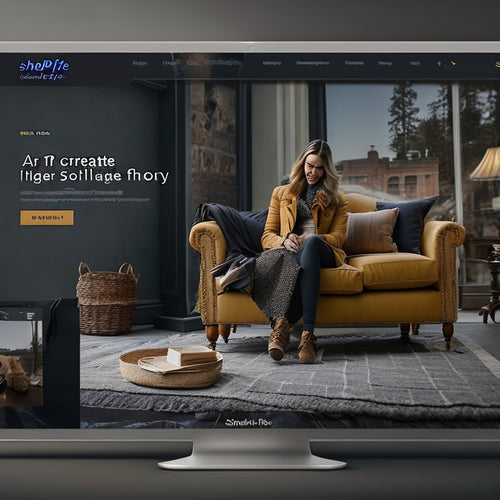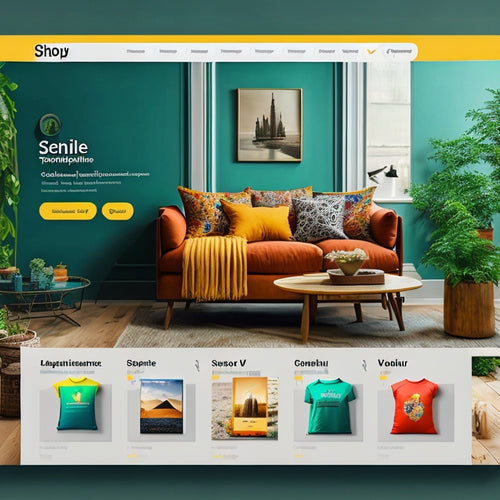
Retain Customers With Digital Product Marketing Strategies
Share
To retain customers, you need to understand their needs better by gathering feedback, utilizing surveys, and actively listening to them. Personalized product recommendations based on customer data can increase sales by up to 10%. Leveraging user-generated content can drive conversions, as 85% of consumers trust online reviews. Building strong customer relationships through loyalty programs can increase revenue by 25%. Engaging product experiences, interactive design elements, and gamification techniques can exceed customer expectations. By implementing these strategies, you'll be well on your way to retaining customers and driving business growth. Now, discover the next steps to maximize customer retention.
Key Takeaways
• Gather feedback from target audiences to understand their needs and preferences and tailor marketing efforts accordingly.
• Implement personalized product recommendations based on customer data and behavior to increase sales and conversion rates.
• Leverage user-generated content to build trust, drive conversions, and humanize the brand, utilizing social media campaigns and influencer partnerships.
• Foster strong customer relationships through loyalty programs, customer satisfaction, and valuable insights into customer behavior and preferences.
• Create engaging product experiences that meet customer needs, incorporating interactive design elements, gamification, and personalized messaging.
Understanding Customer Needs Better
To understand customer needs better, businesses must prioritize gathering feedback from their target audience. This can be done through surveys, focus groups, social media interactions, and other means of direct communication. By actively listening to customers and analyzing their responses, companies can gain valuable insights into what products or services are most in demand and how to improve their overall customer experience.
Moreover, businesses should also pay attention to industry trends and competitors to stay ahead of the curve. By staying informed about market changes and innovations, companies can anticipate and address customer needs more effectively. Additionally, fostering a culture of customer-centricity within the organization can help ensure that all employees are aligned in their efforts to meet and exceed customer expectations.
Personalized Product Recommendations Work
Personalized Product Recommendations Work
By leveraging customer data and behavior, you can create personalized product recommendations that speak directly to their unique needs and preferences, increasing the likelihood of a sale by up to 10%. This is achieved through behavioral targeting, which involves segmenting customers based on their online activities, purchase history, and demographics. By doing so, you can tailor your marketing efforts to specific groups, increasing the effectiveness of your campaigns.
Here are some key statistics that demonstrate the power of personalized product recommendations:
| Strategy | Result |
|---|---|
| Personalized product recommendations | 10% increase in sales |
| Behavioral targeting | 20% increase in conversion rates |
| Machine learning-based recommendations | 30% increase in customer satisfaction |
Leveraging User-Generated Content Effectively
By harnessing the power of user-generated content, you can tap into social proof, build trust, and drive conversions, as 85% of consumers trust online reviews as much as personal recommendations. This is especially vital in today's digital landscape, where customers are bombarded with ads and skeptical of brand messaging.
By leveraging user-generated content, you can humanize your brand and create a sense of authenticity.
Influencer partnerships can be a great way to generate buzz around your product, as they often have a large following and can share their personal experiences with your brand. Additionally, social media campaigns can be used to encourage customers to share their own stories and photos with your product.
Building Strong Customer Relationships
You can't build a loyal customer base without fostering strong relationships, and research shows that companies that prioritize customer relationships see a 25% increase in revenue.
It's no secret that customer satisfaction is key to driving loyalty and retention. But how do you achieve it? One effective way is by implementing loyalty programs that reward customers for their repeat business.
These programs not only incentivize customers to continue doing business with you but also provide valuable insights into their behavior and preferences.
Creating Engaging Product Experiences
As customers become more loyal, they start to expect more from your products, and it's up to you to deliver experiences that meet their evolving needs and exceed their expectations.
To do this, you need to focus on creating engaging product experiences that drive customer engagement and loyalty. One way to achieve this is by incorporating interactive design elements into your product. Interactive design allows customers to engage with your product in a more immersive and dynamic way, increasing their overall satisfaction and loyalty.
For instance, you can use gamification techniques, such as rewards and challenges, to encourage customers to explore your product's features and functionalities. You can also use personalized messaging and tailored content to make customers feel seen and heard.
Measuring and Optimizing Retention
To effectively measure and optimize retention, tracking key metrics is essential, such as customer churn rate, retention rate, and lifetime value, which offer invaluable insights into customer behavior and preferences. By analyzing these metrics, you'll gain a deeper understanding of your customers' needs and identify areas for improvement.
| Metric | Description |
|---|---|
| Customer Churn Rate | The percentage of customers who stop using your product within a specific timeframe. |
| Retention Rate | The percentage of customers who continue to use your product over a specific timeframe. |
| Lifetime Value | The total revenue a customer generates throughout their relationship with your product. |
To take your retention strategy to the next level, incorporate data analysis and customer feedback into your decision-making process. This will enable you to pinpoint pain points, identify opportunities for growth, and create targeted campaigns to re-engage at-risk customers. By leveraging these insights, you'll be able to develop a data-driven approach to retention, driving long-term customer loyalty and ultimately, revenue growth.
Fostering Brand Loyalty Strategies
By implementing personalized engagement strategies, brands can create emotional connections with customers, driving loyalty and advocacy that translates into long-term revenue growth. You can achieve this by leveraging data to understand your customers' preferences, behaviors, and pain points. This insight enables you to craft targeted communications, offers, and experiences that resonate with them. As a result, customers feel seen, heard, and valued, leading to increased loyalty and retention.
To take it a step further, consider implementing loyalty programs that reward customers for their repeat business. This can be in the form of points, discounts, or exclusive access to new products or services. By recognizing and rewarding customer loyalty, you demonstrate your appreciation for their business and foster a sense of reciprocity. This, in turn, drives customer engagement, encouraging customers to continue doing business with you.
Frequently Asked Questions
How Do I Balance Personalization With Customer Data Privacy Concerns?
"Oh, you want to be a data-driven marketing rockstar, but don't want to freak out your customers with creepy personalized ads, right? You're walking a tightrope between data protection and tailored experiences - it's all about transparency, consent, and respecting those boundaries, friend!"
Can Ai-Generated Content Replace Human-Created Content Entirely?
You're wondering if AI-generated content can replace human-created content entirely. While AI content creation is advancing, it can't replicate human creativity's emotional depth and nuance, making it a valuable supplement, not a replacement, for now.
What Metrics Should I Track to Measure Customer Satisfaction Accurately?
Did you know 80% of companies use customer satisfaction metrics to inform business decisions? You should track net promoter score, customer retention rate, and customer feedback analysis, while also monitoring customer support response time to accurately measure satisfaction.
How Often Should I Update My Product Features to Stay Competitive?
You should update your product features quarterly to stay ahead of the competition, aligning with market trends and customer expectations, ensuring your product development stays on pace with the rapidly evolving digital landscape.
Are Loyalty Programs Effective for B2B Customer Retention as Well?
You've seen it work for B2C, but does it translate to B2B? Case in point: Siemens' loyalty program, which rewards partners for collaborations and incentivizes repeat business, boosting retention rates by 25%.
Related Posts
-
Enhance Shopping Experience With Shareclips: The Ultimate Shoppable Video Solution
ShareClips is a revolutionary platform that revolutionizes the shopping experience by offering a convenient and innov...
-

Social Proof Shopify Apps Help Build Trust Among Customers by Displaying Real Reviews and Actions
This article explores the benefits of using social proof Shopify apps to build trust among customers. By displaying ...
-

Do You Need a SEO App for Shopify
This article examines the necessity of utilizing a SEO app for Shopify. By considering the benefits of incorporating...

